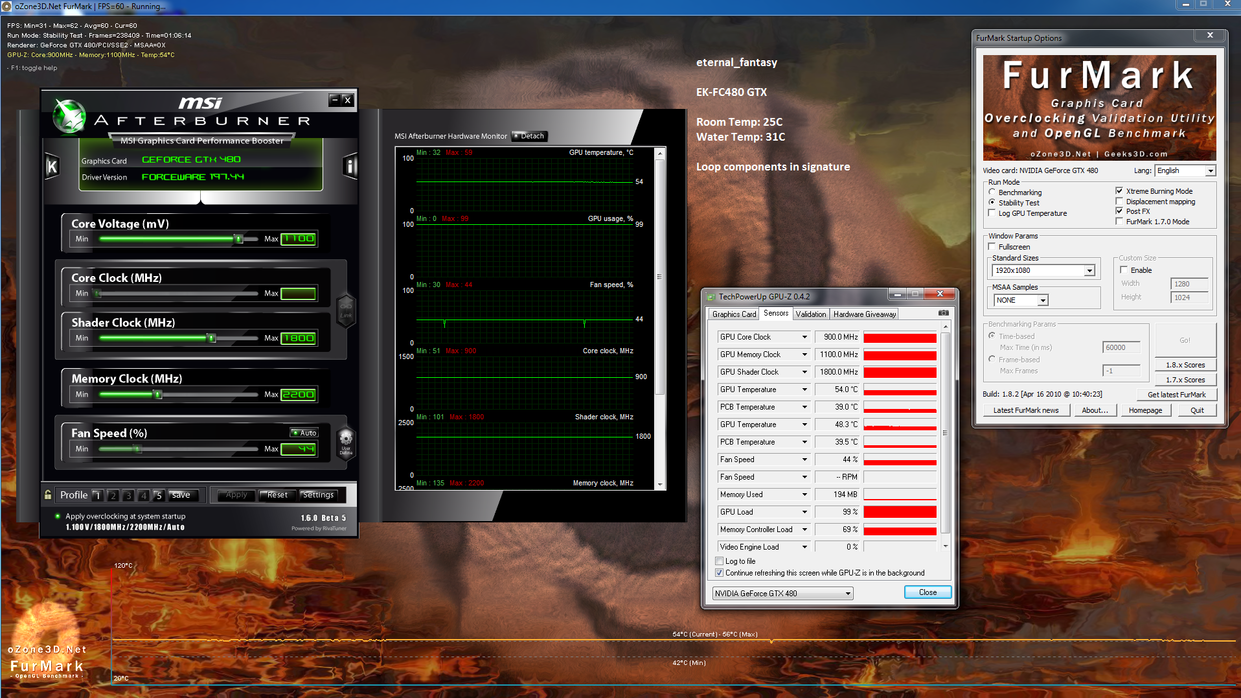Hi All. I've been busy lately, with EVGA and'all ;-)
Images are worth a thousand words. I tried to put everything on one screen so it's all self explanatory. There is more to come though.
The pic is very big, sorry, but it's the only way that one can read all the details clearly.
Next will post Unigine, then xtreme water-cooling setup (since even this dedicated dual rad is kind of mild for the folks around here ;-)






 Reply With Quote
Reply With Quote









 typically cards & processors that require less voltage than others are better silicons, and thus can run a little faster. Congrats! You lucked out. You'd be able to O/C even higher if you had better cooling
typically cards & processors that require less voltage than others are better silicons, and thus can run a little faster. Congrats! You lucked out. You'd be able to O/C even higher if you had better cooling  ..
..







Bookmarks